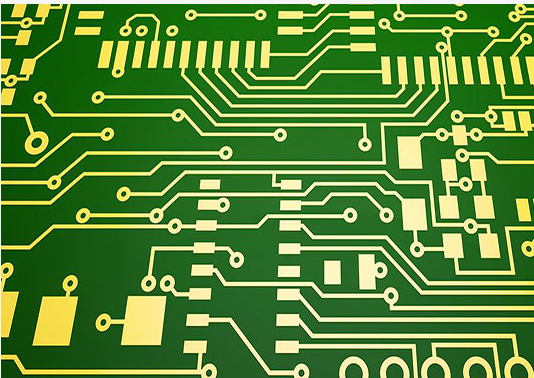Summary of advantages and disadvantages of PCB surface treatment process
With the rapid development of electronic science and technology, PCB technology has also changed a lot, and the requirements for PCB production technology have gradually increased. Today, the editor will share with you some of the advantages and disadvantages of PCB surface treatment technology recently sorted out, and let you know:
One: Hot air leveling (HASL)
Advantages: low cost
shortcoming:
1. The pads processed by HASL technology are not flat enough, and the coplanarity cannot meet the process requirements of fine-pitch pads.
2. Not environmentally friendly, lead is harmful to the environment.

Two:gold-plated PCB board
Advantages: strong electrical conductivity, good oxidation resistance and long life. The coating is dense and wear-resistant, and is generally used in bonding, welding and plugging.
Disadvantages: higher cost and poor welding strength.
Three: Chemical gold / Immersion gold (ENIG)
advantage:
1. The PCB surface treated by ENIG is very flat and has good coplanarity, which is suitable for key contact surface.
2. ENIG has excellent solderability, gold will quickly melt into the molten solder, and the solder and Ni form a Ni/Sn metal compound.
Disadvantages: The process is complicated, and the process parameters need to be strictly controlled to achieve the desired effect. The most troublesome thing is that the PCB surface treated by EING can easily produce black disk benefits in the ENIG or soldering process. The direct manifestation of the black disk is excessive oxidation of Ni and too much gold, which will embrittle the solder joints and affect reliability.
Four: Electroless nickel-palladium immersion gold (ENEPIG)
Advantages: The application range is very wide. At the same time, the chemical nickel-palladium-gold surface treatment can effectively prevent the connection reliability problems caused by the BlackPad defect and can replace the nickel-gold surface treatment.
Disadvantages: ENEPIG has many advantages, but the price of palladium is very expensive, which is a kind of scarce resource. At the same time, it has strict process control requirements, just like nickel gold.
Five: spray tin circuit board
Advantages: lower price and good welding performance.
Disadvantages: Not suitable for welding pins with fine gaps and components that are too small, because the surface flatness of the spray tin plate is poor. It is easy to produce solder beads during PCB processing, and it is easier to cause short circuits to fine pitch components.
Six: Immersion Silver
Advantages: The immersion silver soldering surface has good solderability and good coplanarity. At the same time, there is no conductive barrier like OSP, but when used as a contact surface (such as a button surface), its strength is not as good as gold.
Disadvantages: When exposed to a humid environment, silver will produce electron migration under the action of voltage, and the problem of electron migration can be reduced by adding organic components to the silver.
Seven: immersion tin
Disadvantages: short life, especially when stored in a high temperature and high humidity environment, the Cu/Sn intermetallic compound will continue to grow until it loses its solderability.
Eight: bare copper
Advantages: low cost, smooth surface, good weldability (without being oxidized).
shortcoming:
1. It is easy to be affected by acid and humidity and can not be left for a long time;
2. Because copper is easily oxidized when exposed to the air, it must be used up within 2 hours after unpacking;
3. The second side has been oxidized after the first reflow soldering, so it cannot be used for double-sided board;
4. If there are test points, solder paste must be printed to prevent oxidation and prevent subsequent failure to make good contact with the probe.
Pure copper is easily oxidized if exposed to the air, and the outer layer must have the above-mentioned protective layer. Therefore, surface treatment is required in the circuit board processing.
Nine: OSP craft board
Advantages: It has all the advantages of bare copper plate welding, and the expired board can also be surface treated again.
shortcoming:
1. OSP is transparent and colorless, it is not easy to check, and it is difficult to distinguish whether it has been processed by OSP.
2. OSP itself is insulated and non-conductive, which will affect electrical testing. Therefore, the test point must be opened with a stencil and printed with solder paste to remove the original OSP layer in order to contact the pin point for electrical testing. OSP can't be used to handle electrical contact surfaces, such as keyboard surfaces for keys.
3. OSP is easily affected by acid and temperature. When used in the secondary reflow soldering, it needs to be completed within a certain period of time, and usually the effect of the second reflow soldering will be relatively poor. If the storage time exceeds three months, it must be resurfaced. It must be used up within 24 hours after opening the package.